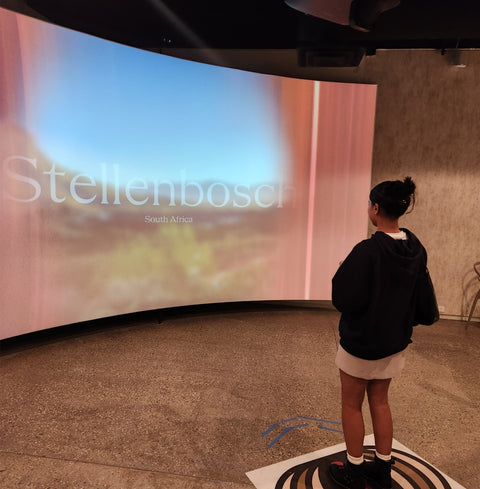At Community, we organize our wines a little differently. Our compass, or guide post in the shop is body weight, and this is why…
Community Wine & Spirits – Where It Started
The origin of our body weight organization lies in David’s experience as a Sommelier and Wine Director for Lidia Bastianich’s celebrated restaurant, Felidia. And it comes from this scripted interaction:
Somm: What are you thinking? Red, white, rosé? Something sparkling?
Diner: Something red, I think.
Somm: Okay, are you thinking about something light, heavy, somewhere in between?
This interaction is about helping a customer find exactly what they are looking for as quickly and efficiently as possible, and body weight in a wine is a big part of that equation.
But what exactly is body weight when talking about wine?
Wine Body Weight Guide
Wine body weight is the overall perception of how a wine feels in your mouth as you drink it. For other beverages, you could think about water being light and olive oil being heavy, or for dairy, it’s the difference between skim, 2%, and heavy cream. In all of these examples, the viscosity is the defining feature, and it’s the result of how the basic components of wine interact with one another:
The components that affect body weight are alcohol, sugar, acidity, and tannin.
Alcohol is easy to measure but can be harder to pin down in a balanced wine that has high acidity and even a small amount of residual sugar. Generally, high alcohol will correlate to a higher body weight.
Sugar is relatively easy to pick out in a wine as long as you remember that fruit flavors do not equal sweetness! When you smell rich fruit flavors, your brain wants to take a shortcut and assume that a wine is sweet because fruit is sweet, but technically many of these sweet-smelling wines will actually have no residual sugar. If there is sugar, you will feel it as weighty on your palate. Drinking a sweet wine is like swirling velvet in your mouth.
Acidity is what makes your mouth water; it refreshes the palate. Many of the higher acid wines will be lighter on the body weight spectrum due to the nature of how grapes ripen. The less ripe a grape, is the higher the acid; the more ripe, the higher the sugar contents of the grape. For another example of how acidity and sugar interact, just think about late summer tomatoes. They taste so much sweeter than the ones earlier in the season, and that’s because they are! As plants grow and undergo photosynthesis, they create sugars. In grapes these sugars leave a sweet taste but are also the building blocks of fermentation which transforms sugars into alcohol. So, for a winemaker, the balance between acid and sugar is what determines when to harvest the crop.
Tannin comes from grape skins, stems, and seeds, as well as from oak aging. Tannins are bitter components that dry out your palate and can add a lot of texture or weight to a wine. The higher the tannin, the higher the body weight.
Important Notes: Grape Types have a big impact on the resulting body weight. There are a few that can be a blank canvas for a winemaker (for example, Chardonnay, which can be anything light to heavy depending on the winemaker’s intent). Reds are often defined by how quickly they gain sugar during the growing season and how much tannin the skins impart. This is why you see more Pinot Noir and Nebbiolo in the medium sections and more Cabernet in the heavy sections.
Community Wine Body Weight Organization

We’ve chosen to follow the somm verbal script and organize everything by color and then by five wine body weight categories: light, medium-light, medium, medium-heavy, and heavy. Having those shoulder sections really helps us to differentiate between what’s actually in the bottle.
Lest you think that body weight is too chaotic, we have each body weight section organized by country moving from “Old World” (France, Italy, and Spain) to non-American “New World” wines, and finally to American wines.
We divide each section with these dividers that point you to what section you are in. The image here represents our medium-heavy red section.


Ultimately, we know that not every visitor in the shop wants to talk to us, and not everyone knows about wine. With our body weight organization, you can at least go home knowing something about the wine you are about to enjoy. And for even more information, you can see some of the tasting notes or stories about the wines on the shelf talkers. Happy wine shopping!


